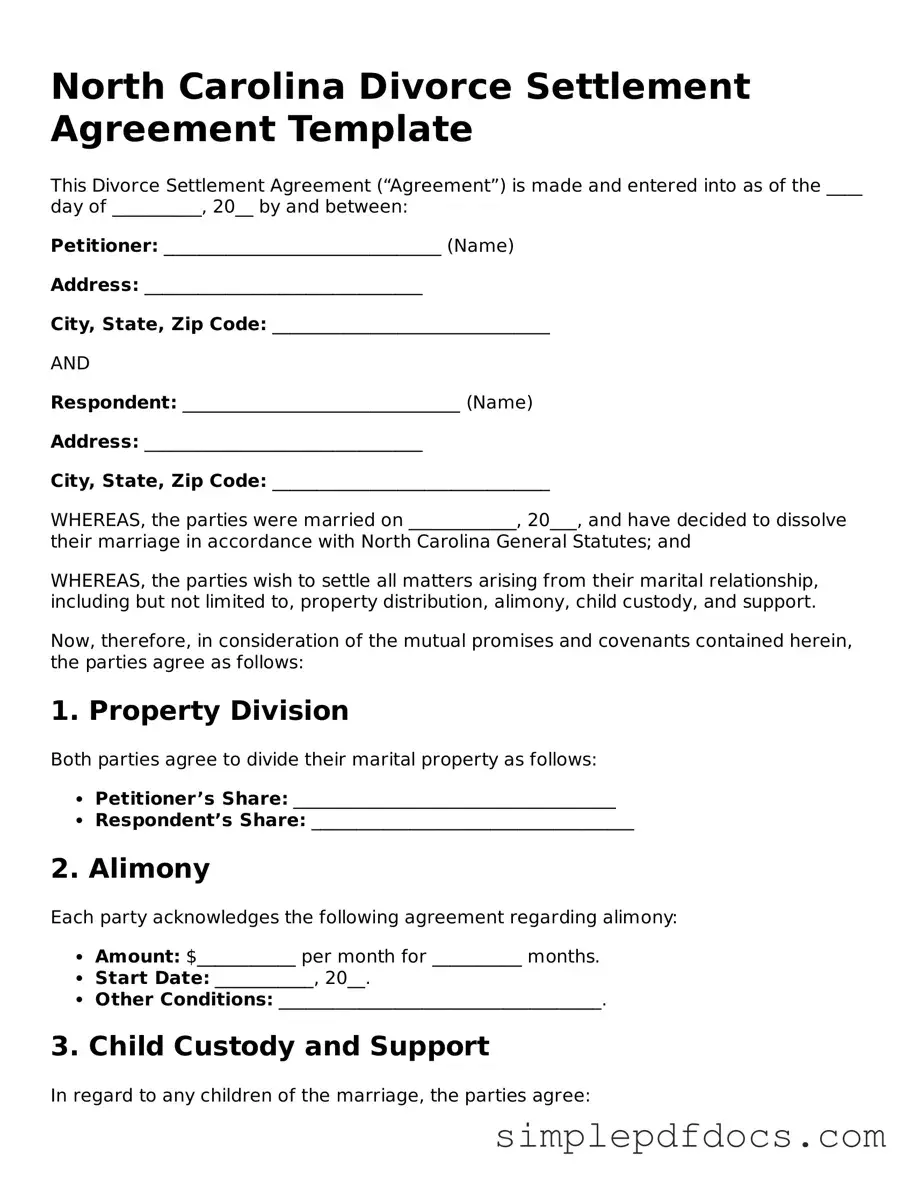Legal Divorce Settlement Agreement Document for the State of North Carolina
The North Carolina Divorce Settlement Agreement form is a legal document that outlines the terms agreed upon by both spouses regarding the division of assets, debts, and other important matters during a divorce. This form serves as a crucial tool in ensuring that both parties have a clear understanding of their rights and responsibilities post-divorce. By formalizing these agreements, individuals can help facilitate a smoother transition into their new lives.
Get Document Here
